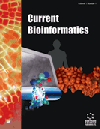
Full text loading...

Genetic correlation plays a pivotal role in elucidating the shared genetic architecture underlying complex traits and diseases. Local genetic correlation can efficiently pinpoint specific genomic regions, thereby enhancing the precision of gene correlation analysis. However, accurate estimation of local genetic correlations remains challenging owing to linkage disequilibrium in local genomic regions and overlapping study samples.
In this work, we propose a novel method called LO-HDL that is based on high-dimensional maximum likelihood estimation. LO-HDL constructs marginal statistics using the summary statistics of GWAS and combines the 1000 Genomes Project Phase 3 data as a reference panel.
To assess the statistical power of LO-HDL, we performed a comparative analysis of LO-HDL with other local genetic correlation estimation methods on simulations with three different degrees of sample overlap. In the case of the absence of sample overlaps, the LO-HDL method improves the statistical power for cases with high local genetic covariance. In the case of partial sample overlap and complete sample overlap, LO-HDL demonstrates an overall improvement in statistical power. As an application, we used LO-HDL to estimate local genetic associations between the four autoimmune disorders. We found that LO-HDL could identify 31 regions with significant associations.
The LO-HDL method can identify genes or genomic regions that jointly influence multiple complex traits, thereby revealing the shared genetic architecture among traits. This approach elucidates the genetic relationships between traits and provides a basis for interpreting their associations. In simulated data, when the local genetic covariance ranges between (0.002–0.004), the statistical power of LO-HDL is slightly lower than that of previous methods. However, LO-HDL demonstrates superior performance in study scenarios with partial or complete sample overlap, as well as in real GWAS data analyses. Through LO-HDL, researchers can more accurately pinpoint genetically correlated regions among diseases. For instance, the TRIM27 gene on chromosome 6 exhibits significant associations with four diseases and may serve as a potential therapeutic target in future treatments.
LO-HDL is a novel method for estimating local genetic correlations, which is based on high-dimensional maximum likelihood estimation. Through its application in simulated datasets and four autoimmune diseases, LO-HDL improves the accuracy of estimating local genetic correlations, which has applicability for revealing relationships between genetic variants and specific traits or diseases.

Article metrics loading...

Full text loading...
References


Data & Media loading...